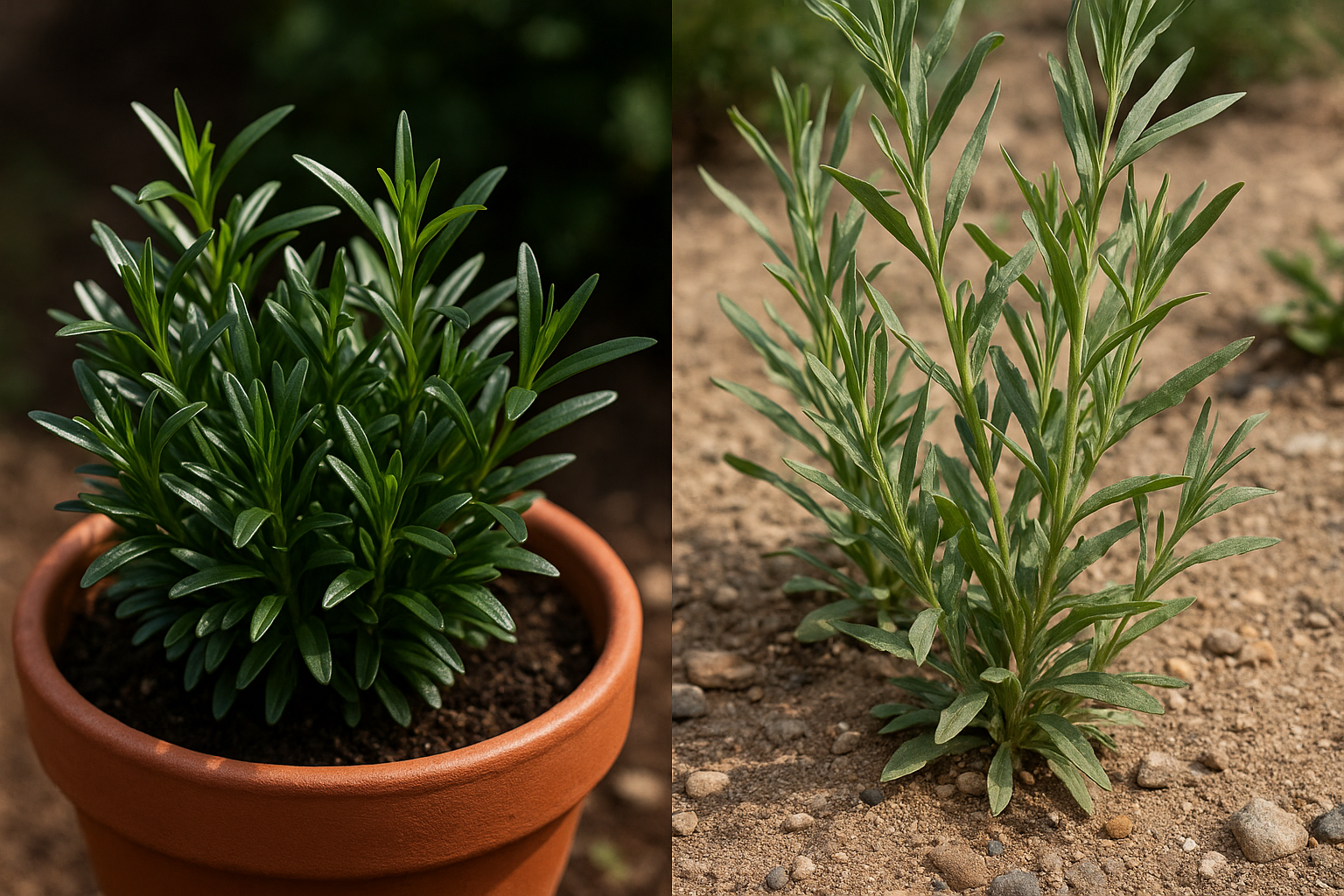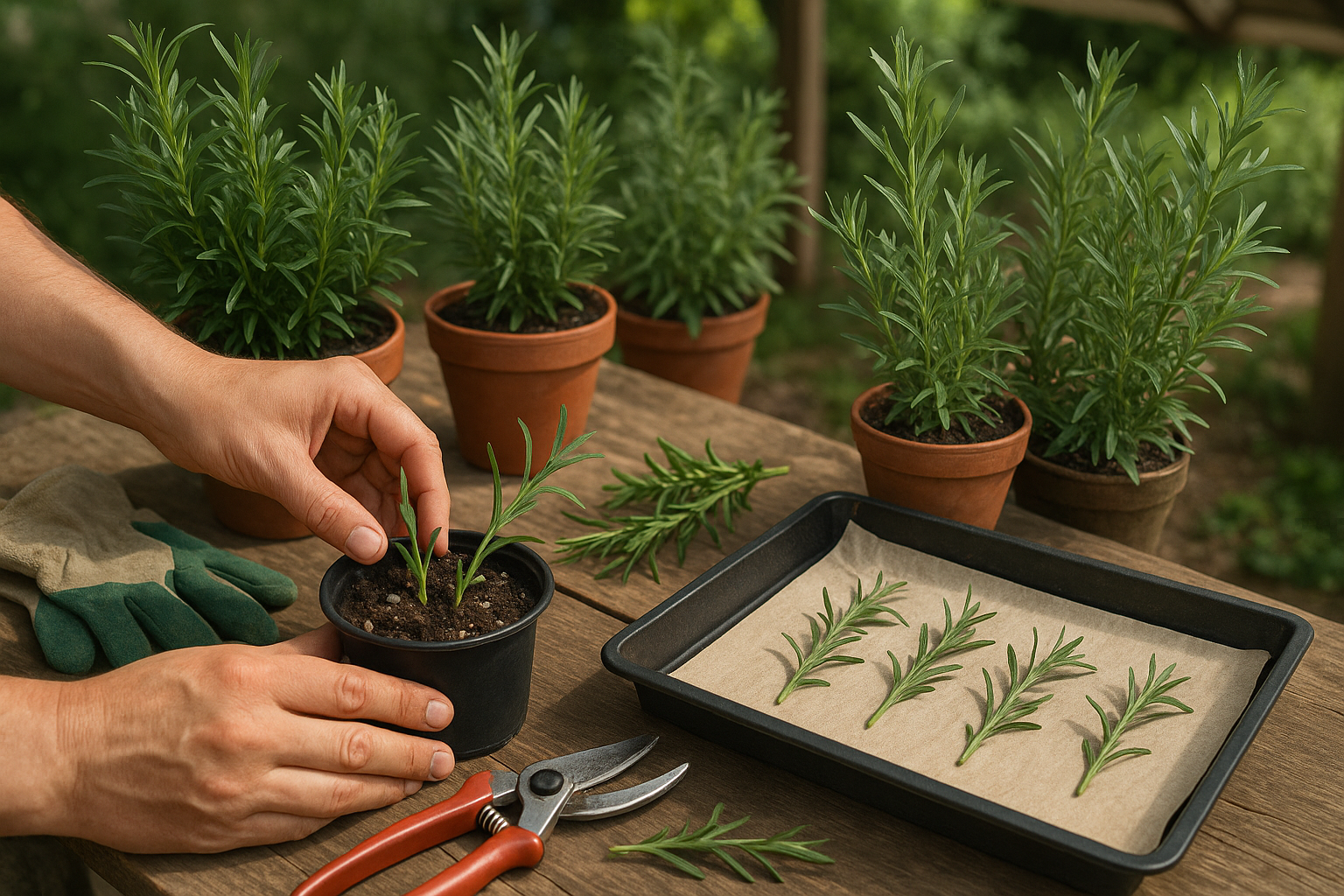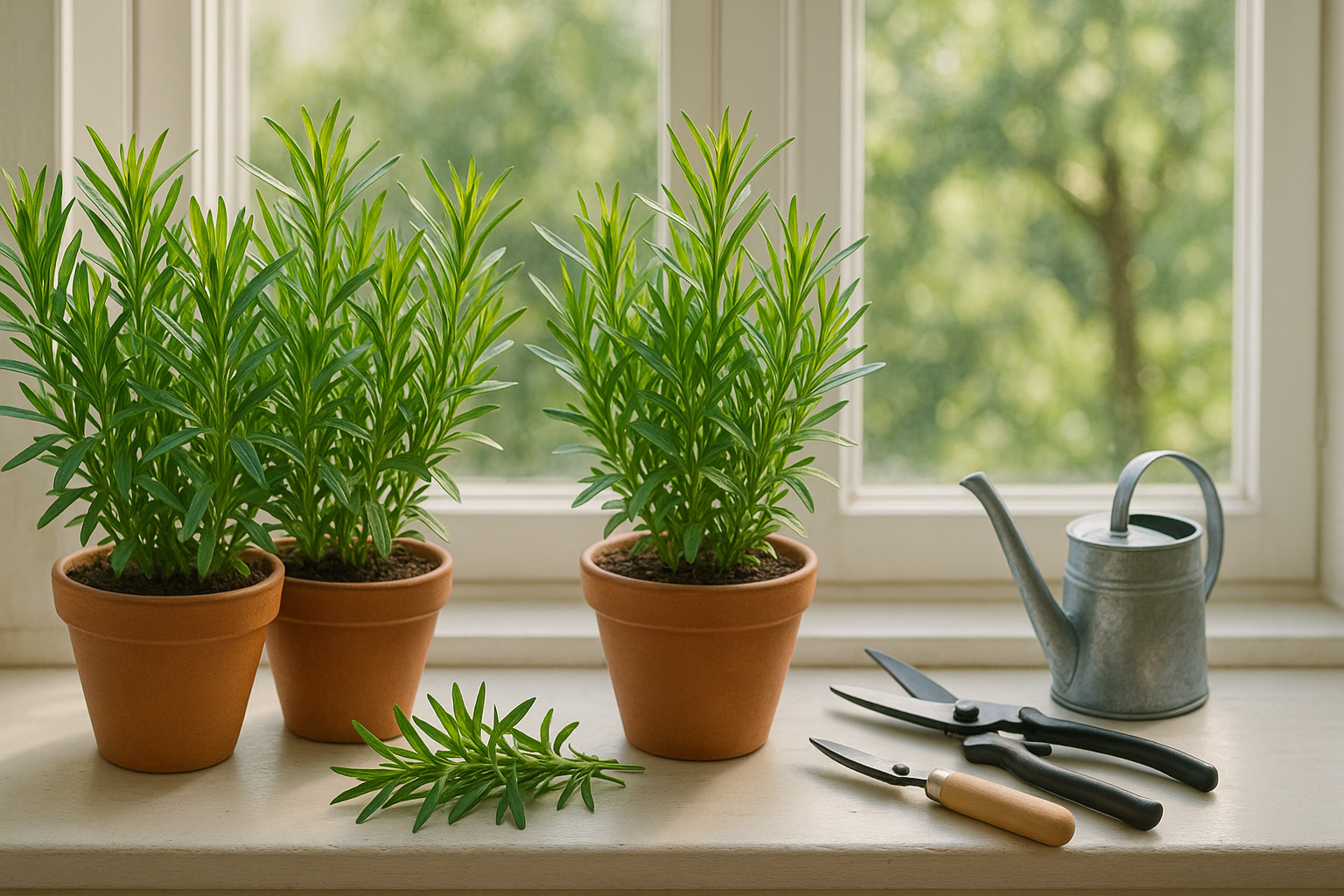Introduction
Growing tarragon year-round is a delicious dream for any home cook who loves infusing dishes with its subtle, anise-like flavor. Tarragon is a popular culinary herb, prized for its role in French classics like Béarnaise sauce and for how easily it elevates roasted vegetables and dressings. But can you grow tarragon all year, even through chilly winters and sweltering summers? The short answer is: yes! With the right know-how and setup, you can harvest fresh tarragon in every season.
In this post, we’ll explore practical tips for both indoor and outdoor growing, help you choose between French and Russian tarragon varieties, and share essential care secrets for non-stop leafy harvests. Whether you have a sunny windowsill or a backyard garden, you’ll find simple, real-world ways to keep this fragrant herb thriving in your kitchen year-round.
Tarragon Varieties & Their Growth Habits

When choosing between French and Russian tarragon, it’s important to understand their key differences for gardening success. French tarragon (Artemisia dracunculus ‘Sativa’) is prized by chefs for its bold, slightly sweet anise-like flavor but can be picky about growing conditions. It’s not grown from seed and needs well-drained soil with plenty of sun. It stays compact, making it ideal for year-round indoor pots or outdoor container gardening, as long as you can bring it inside during cold snaps. French tarragon usually won’t survive harsh winters outdoors.
Russian tarragon, on the other hand, is hardier and grows fast from seed. It tolerates more climates and rougher soil, but its flavor is much milder and somewhat grassy—which many cooks find disappointing.
For reliable, fresh herbs year-round, French tarragon thrives indoors on bright windowsills, allowing continuous harvests. Russian tarragon is better suited for easy outdoor beds, especially if winters are cold.
Ultimately, if amazing flavor and indoor growing are your priorities, French tarragon is the one to pick. But if resilience and outdoor abundance matter more, Russian tarragon can be your go-to—though the taste sacrifice is significant.
Growing Conditions for Tarragon All Year
Tarragon thrives best when it receives plenty of sunlight—ideally six to eight hours of bright, indirect light per day. Outdoors, plant tarragon in a sunny spot or partial shade, keeping in mind that too much intense afternoon sun can scorch the leaves, especially in hotter climates. In regions with cold winters, tarragon dies back but re-emerges in spring. In milder climates, it can persist year-round.
Consistent temperatures between 60°F and 75°F help maintain healthy, flavorful growth, but tarragon does not tolerate frost or prolonged heat above 85°F. Humidity should be moderate; excessive moisture—from humid air or wet soil—can encourage rot and disease.
Growing outdoors allows tarragon to benefit from natural rainfall and airflow, but weather extremes, pests, and poor drainage can be drawbacks. Indoors, you can avoid seasonal issues by setting up grow lights (full spectrum LED or fluorescent lights work well) about 6 inches above the plants to ensure continuous growth, even during winter or in low-light homes. Use a temperature-controlled room or heating mats to maintain stable warmth, and consider a small fan to mimic outdoor airflow and discourage fungal problems.
Choose deep, well-draining containers and fill them with a lightweight potting mix amended with sand or perlite for added drainage—tarragon hates soggy roots and compacted soil. Whether inside or out, soil quality is critical: use slightly alkaline, sandy, or loamy soil, and avoid dense, clay-heavy earth.
Water deeply but let the top inch of soil dry between waterings. Regularly check for mushy stems or yellowing leaves—clear signals the plant needs better drainage or improved air circulation.
By focusing on light, warmth, airflow, and especially soil health, you can harvest fragrant, robust tarragon leaves all year long.
Planting & Propagation Methods

When it comes to growing tarragon, choosing the right propagation method is essential—especially since French tarragon rarely produces viable seeds. For this reason, most gardeners grow it from cuttings, division, or nursery plants.
Propagating by cuttings is straightforward: simply snip a healthy, four- to six-inch stem in spring or early summer, remove the lower leaves, and root the cutting in moist potting mix. You’ll see new growth in a few weeks.
Dividing mature plants every few years (preferably in spring or fall) not only provides new starts but also keeps the parent plant healthy. Alternatively, purchasing young tarragon plants from a nursery guarantees strong growth, especially for beginners.
If you’re planting in pots, opt for well-draining containers and quality herb potting soil, placing the pots in a sunny window or on a patio with six or more hours of sunlight. For garden beds, well-drained soil is vital; amend heavy clay with compost or sand, and space plants around 18–24 inches apart for good airflow.
Outdoor planting is best done in spring after the last frost, while indoor growers can start at any time and even enjoy fresh tarragon year-round. Remember: consistent, moderate watering is key—overwatering leads to root problems, especially in pots.
Year-Round Care & Maintenance Tips
Keeping your plants healthy throughout the year doesn’t have to be complicated—it just takes a little routine care. For both indoor and outdoor plants, maintain a consistent watering schedule, but always check the soil first; overwatering is a common mistake. Use your finger to test the top inch of soil and water only when it feels dry. Indoor plants usually need less water than outdoor ones, especially during the cooler months.
Fertilize during active growing seasons (spring and summer) with an all-purpose plant food, but skip or reduce feeding during fall and winter when most plants rest. Soil quality matters year-round: top up outdoor beds with compost or worm castings, and repot houseplants every couple of years to refresh nutrients and prevent compaction.
For indoor plants, ensure they get bright, indirect light—move them closer to windows in winter, and rotate them regularly so all sides receive sunlight. Good airflow is key to preventing mold and pests, so space pots apart and occasionally open windows or run a fan nearby.
Prune regularly to remove dead leaves and encourage bushier growth. For outdoor edibles, harvest frequently to stimulate more production. As the weather cools, cover tender outdoor plants with burlap or bring them inside to overwinter. Mulch garden beds with straw or bark to insulate roots against frost.
By following these simple steps and observing your plants’ needs, you’ll enjoy vibrant growth and healthier greenery all year long.
Addressing Common Problems & Solutions
Tarragon is generally a hardy herb, but it can still face a few persistent pests and diseases that stunt its growth. Common pests like aphids, spider mites, and whiteflies tend to appear in spring and summer, sucking sap from leaves and weakening the plant.
Powdery mildew, a fungal disease, may develop in humid conditions or during wet seasons, causing leaves to yellow or curl. Indoors, poor air circulation and excess moisture make tarragon more vulnerable to fungal issues. Outdoors, sudden temperature changes or heavy rain can cause leaf spot or root rot.
Prevent these problems by spacing plants properly, providing good drainage, and avoiding overhead watering. Regularly inspect both indoor and outdoor tarragon for early pest signs—like yellow speckles or webbing—and remove affected leaves or treat with insecticidal soap as needed.
For slow growth or legginess, especially in winter, make sure your tarragon gets at least 6 hours of bright light daily. Move indoor pots closer to a sunny window or use a grow light if natural light is scarce. If leaves drop or the plant looks limp during cooler months, reduce watering and trim back stems to encourage healthy, bushy regrowth when the growing season returns.
Harvesting Tarragon Year-Round
To enjoy tarragon’s fresh, anise-like flavor all year long, it’s important to use the right harvesting techniques and preservation methods. The best time to harvest tarragon is in the morning, just after the dew has dried but before the sun gets too hot. This timing helps lock in the essential oils for peak flavor.
Always use clean, sharp scissors or pruners to snip off the top few inches of each stem, cutting just above a leaf node. This encourages the plant to branch out and produce even more lush growth. Be sure not to take more than one-third of the plant at once, so it can recover and continue thriving.
Regular harvesting every few weeks not only provides a steady supply of tarragon but also prevents the plant from becoming woody or flowering too soon. If you end up with more than you can use, try preserving the surplus:
- Drying: Tie small bundles of stems together and hang them upside down in a cool, dark spot with good airflow. Once dried, crumble the leaves into jars for storage.
- Freezing: Chop fresh tarragon and pack it into ice cube trays with a bit of water or olive oil. These cubes are perfect for adding to dishes all winter long.
With these tips, you’ll have aromatic tarragon on hand no matter the season.
Conclusion
Growing tarragon year-round, whether indoors on a sunny windowsill or outdoors in well-drained soil, is both rewarding and surprisingly simple. With just a few basics—regular watering, good lighting, and occasional pruning—you can enjoy the fresh, distinctive flavor of tarragon in your meals anytime.
Don’t hesitate to experiment with different growing spots or try companion planting for even better results. Remember, a little effort brings a lot of flavor!
For more detailed guides, consider checking out trusted gardening websites or local extension programs, and get ready to enjoy vibrant, homegrown tarragon all year long.
